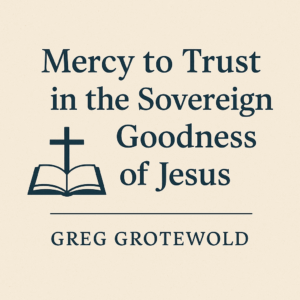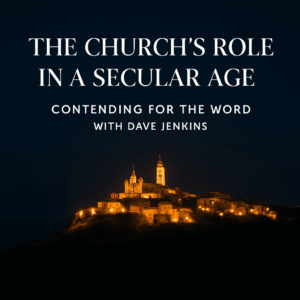⏱️ Estimated Reading Time: 8 min read
“We are narrative creatures, and we need narrative nourishment—narrative catechisms.” —N. D. Wilson
Many of my earliest childhood memories revolve around stories. My parents read to me a good bit. Many of these books were passed down to me and I now read them to my children. Although I didn’t know it then, I was being discipled through those stories. They were providing “narrative nourishment” as N. D. Wilson calls it. Just as we use catechism to sear truths deep into our bones, we must use stories to sear truths into our hearts. Stories mature us by laying hold of our affections. We love the truths of stories and so learn to love the God of truth. In Desiring the Kingdom, James K. A. Smith describes this “narrative nourishment” of affections:
Our ultimate love is oriented by and to a picture of what we think it looks like for us to live well, and that picture then governs, shapes, and motivates our decisions and actions . . . . A vision of the good life captures our hearts and imaginations not by providing a set of rules or ideas, but by painting a picture of what it looks like for us to flourish and live well. This is why such pictures are communicated powerfully in stories, legends, myths, plays, novels, and films rather than dissertations, messages, and monographs” (53).
Famed biologist and atheist, Richard Dawkins acknowledges the power of story when he recently said, “I think it’s rather pernicious to inculcate into a child a view of the world which includes supernaturalism – we get enough of that anyway . . . ” and “Even fairy tales, the ones we all love, with wizards or princesses turning into frogs or whatever it was. There’s a very interesting reason why a prince could not turn into a frog – it’s statistically too improbable” (The Telegraph, “Reading fairy stories to children is harmful, says Richard Dawkins”).
It was The Lion, the Witch, and the Wardrobe that first fueled my affections. I was enthralled with Narnia’s fairy world, distant, yet so close to my own—a world where sacrificial love wins the day. Later in life, I was intrigued by mythology, King Arthur’s knights, Beowulf, and Homer’s Iliad and Odyssey, and later J. R. R. Tolkien’s Middle-earth (a place that holds my affections fast even as an adult).
Many Christians read stories to their children or read fiction for themselves. Some don’t read at all, and simply don’t see the benefit. I worked with an older Christian woman who told me that she never reads fiction because it’s a lie. C. S. Lewis comments on this kind of thinking: “We must not, in false spirituality, withhold our imaginative welcome.” Few, in my experience, read stories as “narrative nourishment”—as fuel to capture our hearts with a vision for beauty and truth that drives our affections to God. I hope to change that.
My daughters love stories with princesses (Frozen was on repeat for months in my home) and mystery like The Boxcar Children. They reenact these stories with cousins and friends using their imagination. My oldest daughter Claire just told me yesterday that it’s hard playing Frozen when her cousin and friend Emma comes over because they all want to be Elsa. The truths of those stories then are rehearsed, and rehearsed, and rehearsed every time they read them and play them out. If stories have this power to grab our affection, then the stories we read (and the ones we don’t read) are important.
The Gospel: A Story Aimed at Our Heart
When we meet together as a church, we rehearse a particular liturgy. The strength of that liturgy depends on how well it connects to the work of the Trinity. In my church, the pastor ends the service with a benediction from Scripture and sends us out into our city. We are scattered with the gospel speeding our steps.
That rehearsal of the gospel is foundational for Christian discipleship. But it should produce a life that’s centered on the gospel throughout the week as well. In a way, all of life should be part of our discipleship—whether we eat, drink, walk, sleep, whatever (Deut. 6:4-9; 1 Cor. 10:31). We live in light of the story of redemption (1 Cor. 15:1-3).
We are rescued by God, redeemed by Christ, and made new by the Spirit. Our lives fit into this gospel narrative, not as heroes, but as integral image-bearers, ambassadors, and heralds of the Christ. When God calls his people to live in a fallen world, he says, “You shall remember that you were a slave in the land of Egypt, and the Lord your God redeemed you; therefore I command you this today” (Deut. 15:15). He rehearses a true story to them. In Old Testament Ethics for the People of God, Christopher Wright says, “Personal experience of God’s goodness is turned into motivation for ethical behaviour that responds out of gratitude and love” (42). This doesn’t change in the New Testament. Paul regularly rehearses the truth of the gospel story (Rom. 1-6; 1 Cor. 15) before providing any kind of ethical imperative (Rom. 12-16). This pattern is a regular feature of Paul’s letters.
Even the development of the New Testament, bears this out. The church first held dear stories of the life and death of Christ and rich doctrine sprung out of those stories—because stories of sacrificial love, death, and resurrection dig into our hearts. We want them to be true. “We all like astonishing tales,“ says G. K. Chesterton, “because they touch the nerve of the ancient instinct of astonishment.” There is no more astonishing tale than God becoming man to die for his enemies.
Stories and Missional Discipleship
So as we read stories that highlight truths that the gospel also teaches us, these are opportunities to nourish the delight, astonishment, and wonder in ourselves, our children, friends, and unbelievers. Once our hearts are in love with the story, our minds will not be long in following suit. Tolkien makes this point in a letter to his son Christopher.
“[C.S.] Lewis recently wrote a most interesting essay (if published I don’t know) showing of what great value the ‘story-value’ was, as mental nourishment—of the whole Chr. story (NT especially). It was a defence of that kind of attitude which we tend to sneer at: the fainthearted that loses faith, but clings at least to the beauty of ‘the story’ as having some permanent value. His point was that they do still in that way get some nourishment and are not cut off wholly from the sap of life: for the beauty of the story while not necessarily a guarantee of its truth is a concomitant of it, and a fidelis is meant to draw nourishment from the beauty as well as the truth.” (‘96 To Christopher Tolkien’, 109)
With stories that don’t reflect truth of the gospel, it’s an opportunity to contrast the gospel truth with the shallow, faulty, affection grabbing stories of that “secular liturgy” as James K. A. Smith calls them. We can read and see what worshiping other gods looks like. How those false stories are lived out. Christopher Wright says, “The ethical teaching of the Old Testament is first and foremost God-centered . . . [T]his underlines for us the importance of the first commandment: ‘You shall have no other gods before me.’ For any ‘other god’ would result in a different ethic” (46). Some stories demonstrate what this different ethic looks like.
Also, reading good stories provides missional opportunities. Whenever I run into atheists who love Lewis’s Narnia or Tolkien’s Middle-Earth, my ears perk up. I know that if they love those stories, if they love truths rehearsed in those worlds, if their hearts are entangled in them, then they are not far from loving the gospel. It’s an amazing way to share the gospel. “If you love that this is true in Middle-Earth, God has done this same sort of thing in our world. How can your heart long for the truth and beauty found in Tolkien, but not in your own life?”
So we must not neglect narrative nourishment. We must eat stories for life—to grow and mature as disciples. Christians who refuse to do so are missing an important part of their discipleship because Christians are part of a story-formed community. C. S. Lewis compares the Christian who refuses narrative nourishment with the non-Christian who eats it as her regular meal.
“A man who disbelieved the Christian story as fact but continually fed on it as myth would, perhaps, be more spiritually alive than one who assented and did not think much about it. The modernist . . . need not be called a fool or hypocrite because he obstinately retains, even in the midst of his intellectual atheism, the language, rites, sacraments, and story of the Christians. The poor man may be clinging (with a wisdom he himself by no means understands) to that which is his life.” (‘Myth Became Fact,’ 67)
Let’s not waste the opportunity for making, maturing, and multiplying disciples that reading, talking about, sharing good stories affords. Scripture is made of stories. Christ fulfills the gospel story. We live in a grand story. And the best stories help us know the gospel better—by grabbing our hearts.
This post first appeared at Gospel Centered Discipleship and is published here with the permission of GCD.



